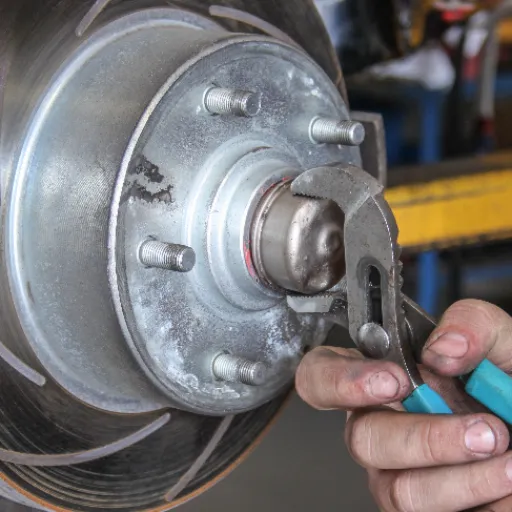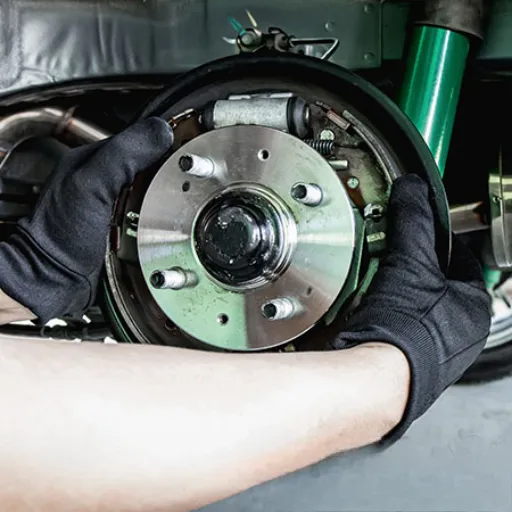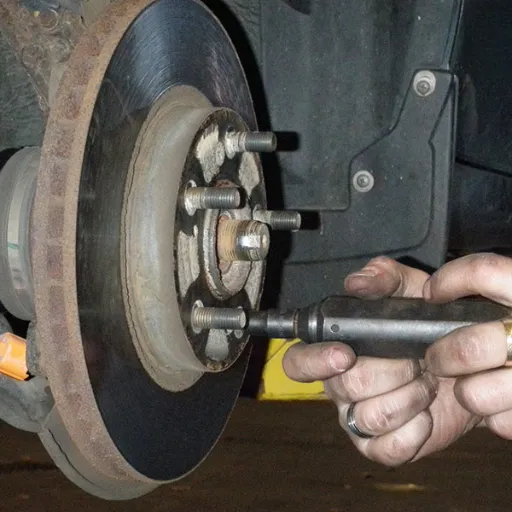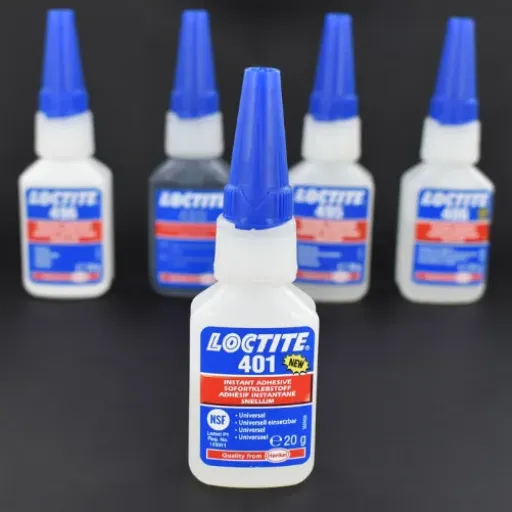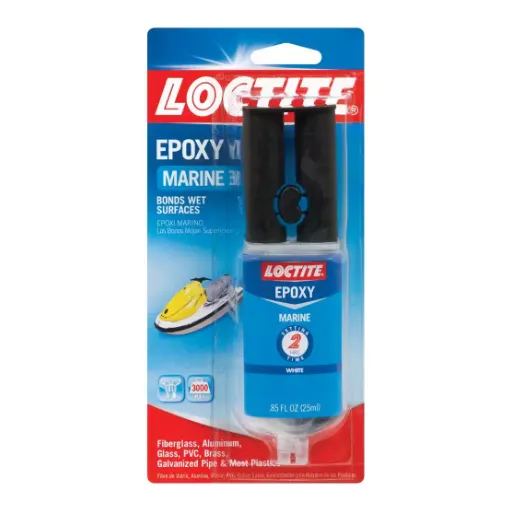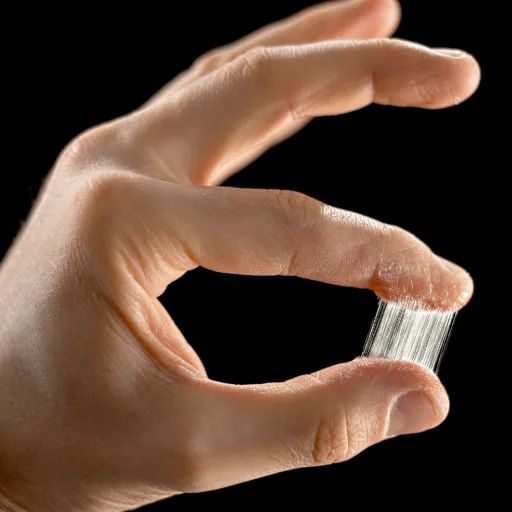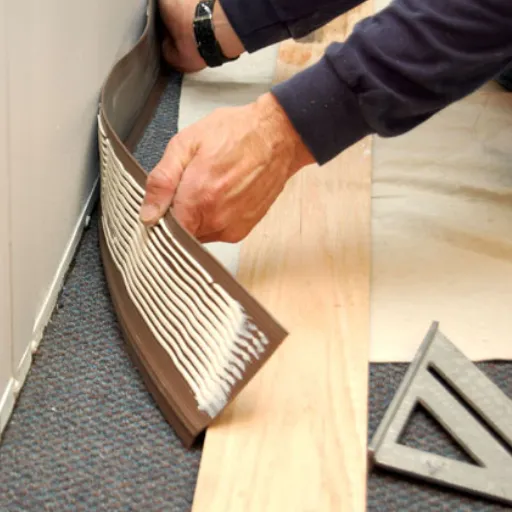Concrete work is not an ordinary job, and it opens up a whole new set of possibilities while it is being built. When repairing cracked surfaces or gluing new parts or fixtures, a good glue must be used, which will last for a very long time and be durable. However, not all glues are the same, and sifting through the strong adhesives for concrete can be a daunting task. This guide is here to simplify your search with expert insights into the adhesives best suited for concrete applications. From heavy-duty epoxy bonds to fairly flexible polyurethane glues, you will know everything necessary to take on your project with confidence and precision. Continue reading for the ideal adhesive for construction and DIY projects!
Understanding Concrete Adhesives
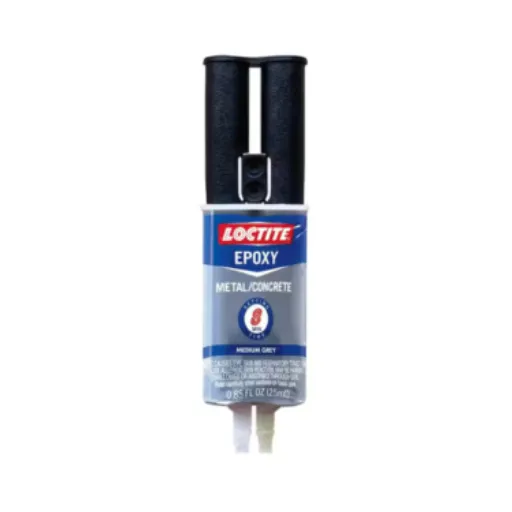
Concrete adhesives are specifically designed to glue one concrete surface to another concrete surface or to another material. Depending on their nature, they fall into one of three categories: epoxy adhesives, polyurethane adhesives, or acrylic adhesives.
- Epoxy adhesives are exceptionally well-suited for heavy-duty jobs due to their exceptional strength and durability.
- Polyurethane adhesives offer flexibility and provide resistance to movement or vibration in the projects where they are used.
- Acrylic adhesives work as a quick-curing alternative for lighter tasks.
Selecting a concrete adhesive will depend on the concrete project requirements, the materials to be bonded, environmental conditions, and the desired level of bond durability.
How They Work
In adhesives, two processes occur: adhesion and cohesion. Adhesion is the attraction force between the adhesive and the surfaces under cementation, which causes bonding of materials. Cohesion is the inner strength of an adhesive that supports the load acting over bonds under stress or pressure. Primarily, these bonds are formed through the chemical reactions of various modern adhesives, which cure via heat, moisture, or UV radiation. This mechanism enables adhesives to be used in a wide range of applications and conditions.
Types of Concrete Adhesives
Concrete adhesives are available in various forms, depending on the specific bonding conditions that must be met. The more usual types are:
Epoxy-Based Adhesives
Having been considered the strongest adhesive in the world, epoxy adhesives are widely used in structural applications. They are used to bond concrete to materials such as metal, wood, and glass; therefore, they are resistant to chemicals, moisture, and heat.
Acrylic Adhesives
A set-it-and-forget-it kind of adhesive, consistently fast and versatile. They may be used on repair jobs or to bond concrete with minimal surface preparation.
Polyurethane Adhesives
Due to their flexibility and resistance to temperature fluctuations, polyurethane adhesives are ideal for applications that require movement or flexibility. Water and weather also resist pain well, making it a great specification for outdoor hazards.
Latex Adhesives
Primarily used in lightweight, non-structural applications, latex adhesives are easy to apply and provide moderate adhesion. They are mainly used on floor or tile installations.
Silane-Modified Polymer Adhesives (SMPs)
These hybrid adhesives offer bonding strength and elasticity to varying degrees, making them very useful for withstanding changing environmental stresses; their properties fall somewhere between those of polyurethane and silicone.
Top 2025 Recommendations for Strongest Concrete Glue
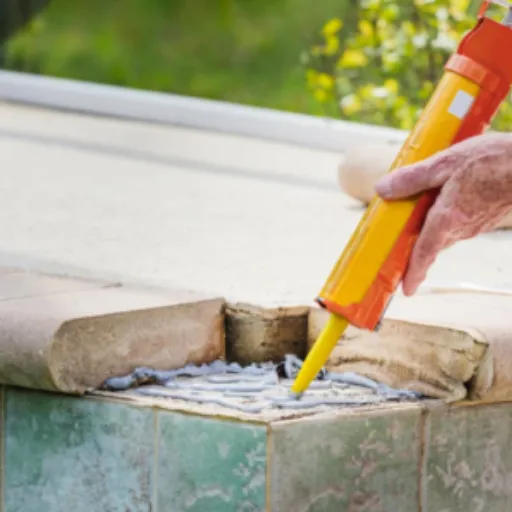
Our Top Picks for 2025
- Gorilla Heavy Duty Construction Adhesive: Known for its strong bonding power and versatility, it works best on concrete, stone, and other types of surfaces. Being water-resistant, it is suitable for both indoor and outdoor applications.
- Loctite PL Premium Polyurethane Construction Adhesive: The adhesive is not only durable but also resistant to moisture and harsh conditions, making it favorable for demanding projects.
Detailed Product Reviews
1
Gorilla Glue Heavy Duty
Gorilla Glue Heavy-Duty is an all-purpose glue made for projects that demand an intense level of strength and durability. This glue produces strong bonds for various materials, including wood, metal, foam, and ceramic, and is especially valued for its water resistance. Working conditions can vary, but these adhesives perform well in both indoor and outdoor environments. From home repair to construction, art and craft work, Gorilla Glue Heavy-Duty is trusted for superior performance and lasting hold.
2
Loctite PL Fast Grab Premium
It is a high-performance adhesive specifically designed for demanding application areas in construction and repair. With an advanced Polyurethane formulation, it offers exceptional strength and durability, making it suitable for heavy applications on wood, concrete, stone, metal, and other surfaces. The “fast grab” feature ensures a quick initial tack, eliminating the need for design or clamping for extended periods. In addition to being water-resistant, it also bonds at a wide range of versatile temperatures, making it an excellent choice for both indoor and outdoor projects. For professionals and DIY enthusiasts alike, Loctite PL Fast Grab is a brand they can trust for a strong product and a long-lasting finish.
Factors to Consider When Choosing Concrete Glue
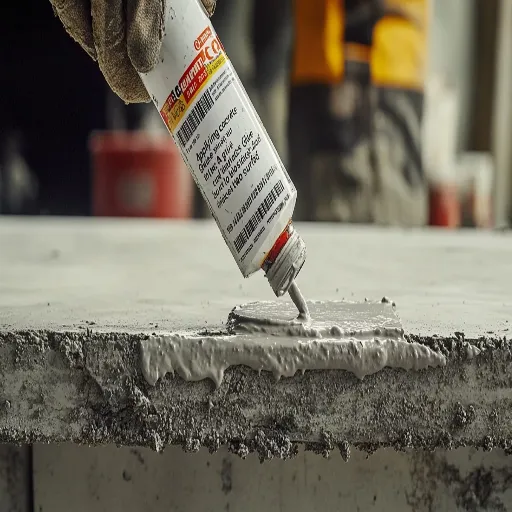
- 1
Type of Project: Glue can be used for either structural repairs, addressing small cracks, or aesthetic work. Different types of concrete glue have specific uses tailored to their unique properties.
- 2
Adhesion Strength: The glue should provide sufficient bonding, especially in areas where heavy or load-bearing structures are involved.
- 3
Curing Time: The drying and curing time of the glue is essential. What sometimes matters are quick results or exposure to adverse weather conditions.
- 4
Weather Resistance: Select a product that can withstand environmental factors such as moisture, extreme temperatures, or UV exposure.
- 5
Ease of Application: Less hassle during application! Look for glues that require the fewest number of tools and are easy to finish with.
- 6
Compatibility: Verify that the glue is specifically designed for use with concrete and any other materials used in the project.
- 7
Durability: Select a glue specifically designed for longevity, ensuring it will not deteriorate over time or lose its effectiveness.
Material Compatibility
When deciding on a glue for concrete, knowing material compatibility is critical to accomplish a strong and lasting bond. Some adhesives are specifically designed to adhere to concrete, while others are formulated for bonding concrete to various materials, including wood, metal, glass, or plastic. For example, epoxy-type glue is typically used when strong adherence of concrete to metal is required, with added capability against weather effects. Similarly, polyurethane adhesives can be used for bonding wood to concrete. It is also essential to verify the product specifications to ensure the glue is compatible with all materials for your project, thereby avoiding failures or weaknesses in the bonding.
Weather Resistance
During outdoor use, weather resistance is a key factor in adhesion. Resistance to moisture, UV exposure, and temperature fluctuations is a must-have requirement for outdoor adhesives. Among them, epoxy adhesives are pretty durable, and rain, wind, and sun cannot significantly degrade them; hence, they are recommended for long-term outdoor applications. Silicone-based adhesives are particularly well-suited for maintaining their flexibility and adhesion, even at extreme temperatures, ensuring good performance under both warm and cold conditions. It is best to always work with adhesives explicitly labeled for outdoor or weather resistance, as environmental stressors may otherwise jeopardize the bonds.
Comparative Analysis of Leading Brands
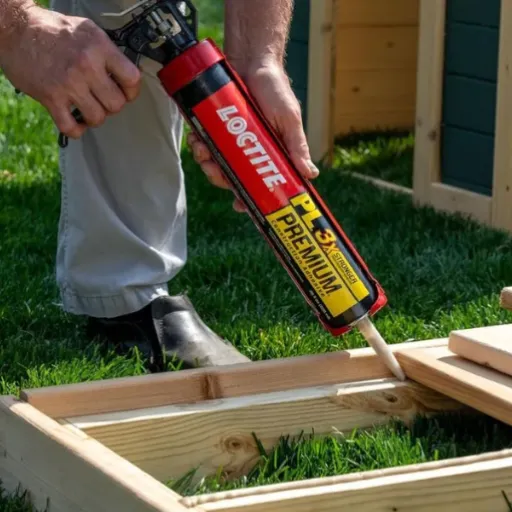
| Brand | Key Features | Best For | Cure Time |
|---|---|---|---|
| Gorilla Glue Heavy Duty | Strong adhesion, versatility, weather-resistant, and expands during curing | Wood, metal, ceramic, stone bonding; outdoor applications | 20-30 minutes minimum; full strength in several hours |
| Loctite PL Fast Grab Premium | Instant grab, minimal bracing required, extreme temperature performance | Vertical applications, heavy materials, construction projects | Fast initial tack; quick overall curing |
Strength and Durability Analysis
When discussing strength and durability, Gorilla Glue and Loctite PL are both quite effective, and the projects that require these glues are pretty demanding. Gorilla Glue expands during curing, enabling its extreme and durable bonding action to adhere to a wide range of surfaces, whether porous or non-porous. This provides excellent durability in extreme climatic conditions and across a wide range of temperatures.
In contrast, Loctite PL is designed to service the heavy construction tasks. Due to its fast curing capacity, it achieves great bond strength very quickly, making it highly preferred for joining building materials such as wood, metal, and masonry. Both the adhesives are good at resisting water and environmental wear and tear; however, Gorilla Glue has more versatility, whereas Loctite PL is more suited to specialized construction-grade projects. The final choice depends on the strength needs and surface compatibility of the particular task.
Ease of Application Comparison
Gorilla Glue
- Requires a slightly damp surface for activation
- Longer curing time
- May need clamping for perfect bonding
- More versatile for various materials
Loctite PL
- Immediate use with minimal preparation
- Precise, controlled application
- Better for large construction projects
- Professional-grade simplicity
Recent customer feedback indicates that Loctite PL is praised for its simplicity in professional settings, while Gorilla Glue is valued for its versatility in projects requiring preparation. The choice depends on situational experience and project demands.
Practical Tips for Application and Maintenance
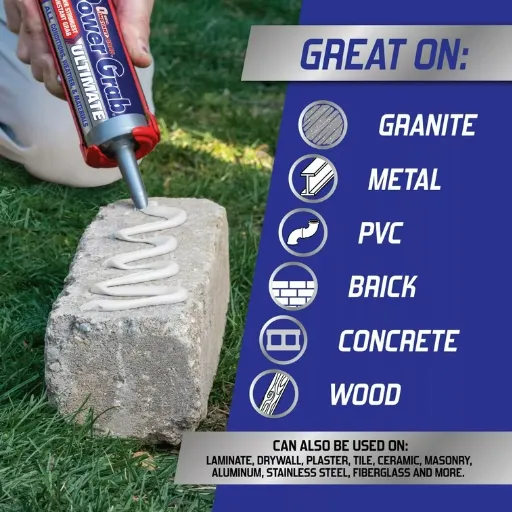
Essential Application Steps
- Surface Preparation: Ensure all surfaces are clean, dry, and free from dust, oil, and debris to achieve maximum adhesion.
- Applying Adhesive: Using a caulking gun is preferred to ensure proper and even application with products such as Loctite PL. An ideal practice for using Gorilla Glue is to dampen one surface to activate it slightly.
- Clamping and Setting Time: Follow instructions from the manufacturers of each adhesive for proper clamping and adequate curing times. Most adhesives require a minimum of 30 minutes of clamping time and allowance of at least 24 hours to create a complete bond.
- Storage: After each use, ensure the adhesive is tightly sealed and stored in a cool, dry place to prevent hardening or spoilage.
- Safety Measures: Wear gloves and work in a well-ventilated area while applying adhesives to prevent skin contact and inhalation of fumes. Dispose of used materials responsibly.
Surface Preparation Guide
When an adhesive is applied, the surface must be adequately prepared to ensure a strong and durable bond. Surface cleaning must be done correctly to remove dirt, grease, and debris from the surface.
Step-by-Step Cleaning Process:
- Use a proper solvent, such as isopropyl alcohol, to wipe the surface clean and let it dry thoroughly.
- If the material is smooth, try sanding the surface very lightly to create a rough texture.
- Use a clean, dry cloth to wipe away dust after sanding.
- Do not allow any moisture to be on the surface when applying the adhesive; just small traces of water can hinder the bonding process.
These simple procedures will give the best results in the majority of adhesive applications.
Maintenance Advice
Maintaining a working relationship entails regular checks for signs of wear or weakening of the glued surfaces. Whenever this happens, I take the opportunity to clean the surface and reapply the glue, ensuring the surface remains functional and durable.
Reference Sources
Here are five intellectual flagship references with which one can ascertain the correctness of their article on the strongest glue for concrete. These academic references offer in-depth research or insights into concrete adhesives:
- MDPI – Experimental Research on Epoxy Glue Adhesion to Concrete: This study examines the factors influencing the adhesion of epoxy glue to concrete, with a special emphasis on viscosity and substrate surface properties.
- MDPI – The Influence of Epoxy Glue Modification on CFRP Tapes for Concrete Bonding: This research investigates the use of epoxy glue for bonding CFRP tapes to concrete surfaces, aiming to gain a deeper understanding of the adhesive’s performance.
- ScienceDirect – Concrete-to-Concrete Bond Strength: The paper investigates the bond strength between two concrete layers and the effect of substrate surface roughness.
- Google Books – Handbook of Adhesives and Sealants: This comprehensive volume encompasses general knowledge on adhesives, their applications, and novel curing techniques, particularly those used in concrete bonding.
- ProQuest – Roffe Construction Chemicals Pvt Ltd: This source discusses specialized adhesives and joint fillers, focusing on their applications in the construction industry.







